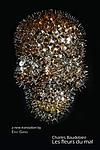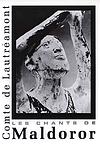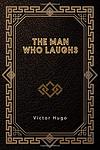The Greatest French "Gothic" Books of All Time
Click to learn how this list is calculated.
This list represents a comprehensive and trusted collection of the greatest books. Developed through a specialized algorithm, it brings together 300 'best of' book lists to form a definitive guide to the world's most acclaimed books. For those interested in how these books are chosen, additional details can be found on the rankings page.
Genres
Gothic literature is a genre that combines elements of horror, death, and romance, often set against dark, brooding landscapes and decaying architecture, such as haunted castles or monasteries. Originating in the late 18th century, it delves into the human psyche, exploring themes of madness, the supernatural, and the sublime. Classic Gothic novels often feature a sense of dread and the unknown, with characters confronting their deepest fears and societal taboos. The atmosphere is typically heavy with mystery and melancholy, and the narrative may include ghosts, monsters, or otherworldly beings. Gothic fiction seeks to evoke a visceral emotional response, such as fear or awe, and often contains a critical look at the time's social, cultural, and moral attitudes. Notable authors in this genre include Ann Radcliffe, Mary Shelley, Edgar Allan Poe, and Bram Stoker, whose works have left an indelible mark on literature and continue to influence modern horror and suspense.
Countries
Date Range
Reading Statistics
Click the button below to see how many of these books you've read!
Download
If you're interested in downloading this list as a CSV file for use in a spreadsheet application, you can easily do so by clicking the button below. Please note that to ensure a manageable file size and faster download, the CSV will include details for only the first 500 books.
Download-
1. The Flowers of Evil by Charles Baudelaire
"The Flowers of Evil" is a collection of poems that explore themes of decadence and eroticism, and the changing nature of beauty in the rapidly industrializing Paris during the 19th century. The work is renowned for its exploration of the paradoxes of pleasure and pain, the exotic and the commonplace, and the boundaries of morality and aesthetics. The poems challenge traditional notions of good and evil, suggesting that beauty can be found in unexpected and even disturbing places.
-
2. The Hunchback of Notre-Dame by Victor Hugo
Set in 15th-century Paris, this novel follows the story of Quasimodo, a deformed and hunchbacked bell-ringer of Notre-Dame Cathedral, who is shunned due to his appearance. Despite his physical deformities, Quasimodo falls in love with the beautiful gypsy girl, Esmeralda. However, his love is unrequited as she is in love with a handsome soldier. The novel explores themes of love, rejection, and the human struggle against fate and societal norms.
-
3. Against Nature by J. K. Huysmans
The novel follows the life of an eccentric aristocrat who retreats from society to live in isolation, dedicating himself to the pursuit of excessive aestheticism. He surrounds himself with art, literature, and music, and indulges in sensual pleasures and extravagant interior decoration. The protagonist's obsession with artifice over nature and his quest for absolute individualism and self-gratification are explored, reflecting the decadent movement of the late 19th-century France.
-
4. Maldoror (Les Chants de Maldoror) by Comte de Lautréamont
"Maldoror (Les Chants de Maldoror)" is a poetic novel that explores the dark and surreal world of the protagonist, Maldoror, a figure of absolute evil who rejects God and conventional morality, often expressing a violent hatred towards humanity. The book is composed of six cantos filled with bizarre and often shocking imagery, which depict Maldoror's experiences in a world that he perceives as chaotic and indifferent. The novel is known for its vivid and often disturbing exploration of the human condition and its subversion of traditional literary norms.
-
5. The Phantom of the Opera by Gaston Leroux
The book tells the story of a beautiful soprano at the Paris Opera House named Christine Daaé who becomes the obsession of a mysterious, disfigured musical genius living in the subterranean labyrinth beneath the opera house. Known as the Phantom, he terrorizes the opera company to compel them to keep giving roles to Christine, whom he tutors in secret. The tale unfolds with love, jealousy, and violence, culminating in a dramatic conclusion.
-
6. Justine by Marquis de Sade
"Justine" is a provocative novel that explores the life of a virtuous young woman who consistently faces adversity and misfortune. Despite her unwavering commitment to virtue and morality, she falls prey to various men who exploit and abuse her, leading her through a series of unfortunate events. The novel is a philosophical exploration of virtue, vice, and the nature of humanity, often challenging conventional notions of morality and ethics.
-
7. Down There by J. K. Huysmans
"Down There" is a novel that follows the life of a Parisian novelist who is disillusioned with his mundane life and seeks solace in the occult. His journey leads him to a satanic priest who introduces him to the dark world of satanism. The protagonist becomes deeply involved in this world, experiencing hallucinations and disturbing visions. The book is a deeply psychological exploration of the human fascination with evil and the macabre, set against the backdrop of late 19th-century Parisian society.
-
8. Gaspard De La Nuit by Aloysius Bertrand
"Gaspard de la Nuit" is a collection of prose poems that delve into the supernatural and fantastical, painting a vivid picture of the nocturnal and mysterious. The work is pioneering in its form, blending poetry with narrative in a way that prefigures the Symbolist movement. It is structured as a series of eerie and atmospheric vignettes that transport the reader to a medieval world filled with phantoms, goblins, and the Parisian bohème. Each piece is a blend of macabre humor, picturesque detail, and gothic romanticism, creating a tapestry of dreamlike and haunting images that challenge the boundaries between reality and imagination.
-
9. The Man Who Laughs by Victor Hugo
Set in 17th-century England, the novel follows the life of a disfigured boy, abandoned as a child on a winter's night, who is taken in and raised by a kind-hearted showman. The boy grows up to become a popular performer due to his permanent grin, a result of a cruel mutilation inflicted by a group of comprachicos. His life is marked by a series of dramatic turns, including love, nobility, and political intrigue. As he navigates a society that is both repulsed by his appearance and captivated by his entertainment, the narrative delves into themes of inner beauty, the nature of humanity, and the corrupting influence of wealth and power.
Reading Statistics
Click the button below to see how many of these books you've read!
Download
If you're interested in downloading this list as a CSV file for use in a spreadsheet application, you can easily do so by clicking the button below. Please note that to ensure a manageable file size and faster download, the CSV will include details for only the first 500 books.
Download







